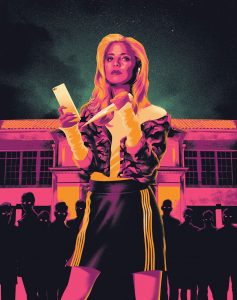
The new Buffy The Vampire Slayer series from BOOM! Studios comes with a set of expectations worthy of pop culture icons. It’s a license that will find itself balancing accessibility and established lore to honor those readers that stuck with Buffy even after the show ended. Given the show continued in comic form to great acclaim, this means that BOOM’s Buffy has to find ways to sink its teeth back into veteran readers as it reboots to get even more readers into the Buffyverse. Not an easy task.
The announcement that superstar colorist Jordie Bellaire—writer of the horror comic Redlands, about witchcraft and the dangers of a panicked patriarchy—would be the leading voice of the Buffy reboot quickly dispelled any doubts over the success of this balancing act. Bellaire is building an impressive body of script work that already displays an interest in developing smart horror that always carries message, although never at the expense of fun, wit, and imagination. Incidentally, these are precisely the kind of things the Buffy TV show managed to achieve. What I’m trying to say is, alongside artist Dan Mora, Bellaire is the writer Buffy deserves.
In celebration of Buffy the Vampire Slayer #1’s release in comics shops today, the Beat sat down with Bellaire and series editor Jeanine Schaefer to talk about the iconic vampire slayer. We discuss what she might represent or fight against in today’s world and how to honor a legacy as prolific as hers with new stories.
After the interview, get an exclusive first look at the interiors of next month’s Buffy the Vampire Slayer #2!
Ricardo Serrano: I want to start with what the Buffy reboot means for the license in general, knowing the character has such a strong following but also a kind of magnetism that makes it easy to hook in new readers.
Jeanine Schaefer: What we have is such a rich universe to play with and explore. Dark Horse did such an amazing job of expanding the universe and keeping its base coming back for more. Our job is to take the spirit of Buffy and what makes her so exciting and so relevant and important and bring that to a new era. So for people who know the show and who know the universe in and out, we’re looking for ways to do more fun things and fun twists with the characters people know and love, so they see new dimensions within the universe while also building it from the ground up. It’s been interesting seeing what we can do with some characters now that they couldn’t do back in 1997.
Jordie Bellaire: When Jeanine was pitching me the series in the beginning, I was really nervous. But she presented it in a very cool way, as if it was going to be like Marvel’s Ultimate universe and that we should see it as something like that. I think that’s a good way of thinking about new readers, of providing new stories they haven’t heard of before while also looking at certain elements that bring it back to the original series in a new context. So there’s something new for everyone.
Serrano: Talking about what the vision is and how it can bring together old and new readers into a fresh experience, I was wondering, Jeanine, how editing this new Ultimate Buffy compares to editing superhero comics. I mean, you’re still dealing with licenses and reader expectations.
Schaefer: I don’t think it’s that different to be honest. When I worked with Marvel, you become like the caretaker for the character and you think about why people love him or her so much, why I love them so much. So you look at different pieces and find different ways to put them together, add new parts in, and draw out characters in different ways. It’s making that roadmap and looking for those things that’ll bend the characters but not break them. That’s exactly what we’re doing here. I mean, that’s my philosophy with storytelling, no matter where you’re telling that story from. You try not to break what’s there while you’re putting all those pieces together. We take care of our characters.
Serrano: I’m interested, Jordie, if being a colorist has shaped your approach to script writing. Do you think of a color palette when writing the story, do you suggest colors or tones and such in the descriptions? Or do you take a step back and put your trust on the creative team?
Bellaire: Generally I think visually as I write because I’m so inspired by film and also because I’ve been a colorist for so long. But when it comes to the scripts for Buffy, I don’t put in any requests. I mean, there is one nightmare sequence where I do specify some color things but it’s because I’m maybe going for something that’s Dario Argento-like and want the team to have a point of reference. But with a team like this I know I just have to back away and let them do the things they are good at doing. They’re really making me look good and I don’t want to interfere with that. I think that’s the best way to work, going hands off.
Serrano: So what do you think Buffy means for audiences today? Buffy is a feminist icon, in a sense, and the show has done so many things for female representation. What can she say in today’s world or stand for in our present?
Schaefer: Buffy is so relevant still, the things the characters are grappling with, like the monsters of high school, whether they’re real monsters Buffy faces or metaphors of social problems. No matter what they’re fighting physically, they’re always struggling with identity, communication, being heard, who am I going to be, what does the future bring. I think today’s kids have like a different sense of mortality, whereas before it was “oh, I’m going to live forever,” now it’s more conflicted, which is a horrible thing to even have to say. We’re very aware of that as we work on this. I think it’s still very relevant. Not just from a feminist point of view, but just from the point of being a teenager.
Bellaire: I think Jeanine is perfectly right. We’ve talked about how now we’re so connected thanks to the internet and social media and how that has resulted in people being kind of tribal as well. I think Buffy, even in the 90s, was able to bridge the gap between so many different tribes within the high school. So I really enjoy trying to write a character that’s not just going to adjust to and address young women, but also young men and where they fit in. The same for everyone, really. It’s about how we build our own worlds but also how we can reject all that and be connected. I’m hoping that Buffy can really address some of those things. She’s just such a likable character.
Serrano: Before we wrap up, are you thinking of expanding the universe with spin-off series or are you taking it one step at a time?
Schaefer: Right now we’re taking it one step at a time, giving Buffy the care and attention she needs. But we do have a lot of plans coming up. We’ll see.
And now, as promised, here’s a sneak peek at what’s next for Buffy in issue #2 of her newest adventure.


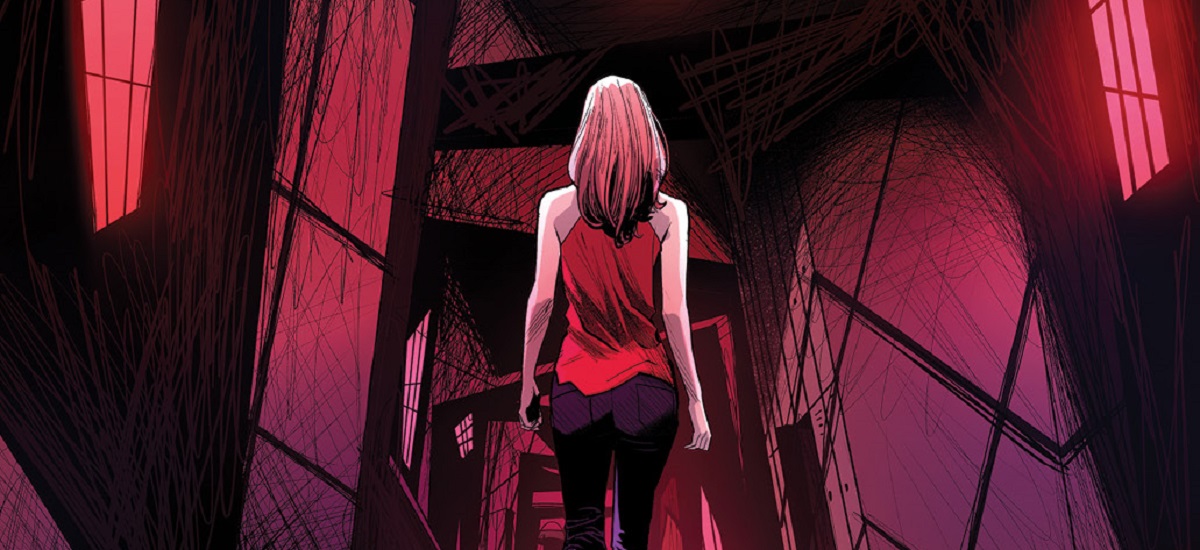
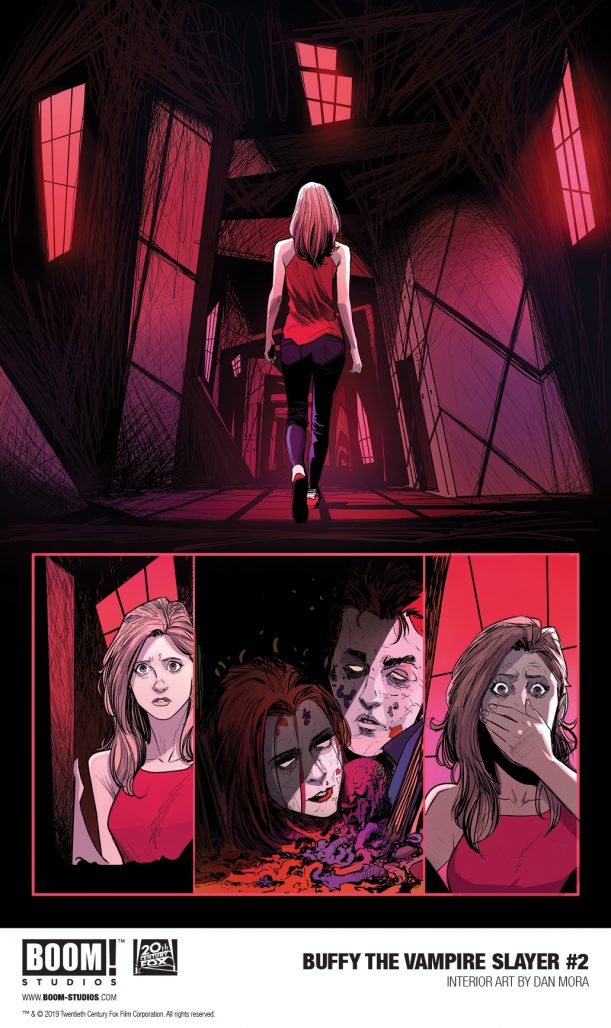
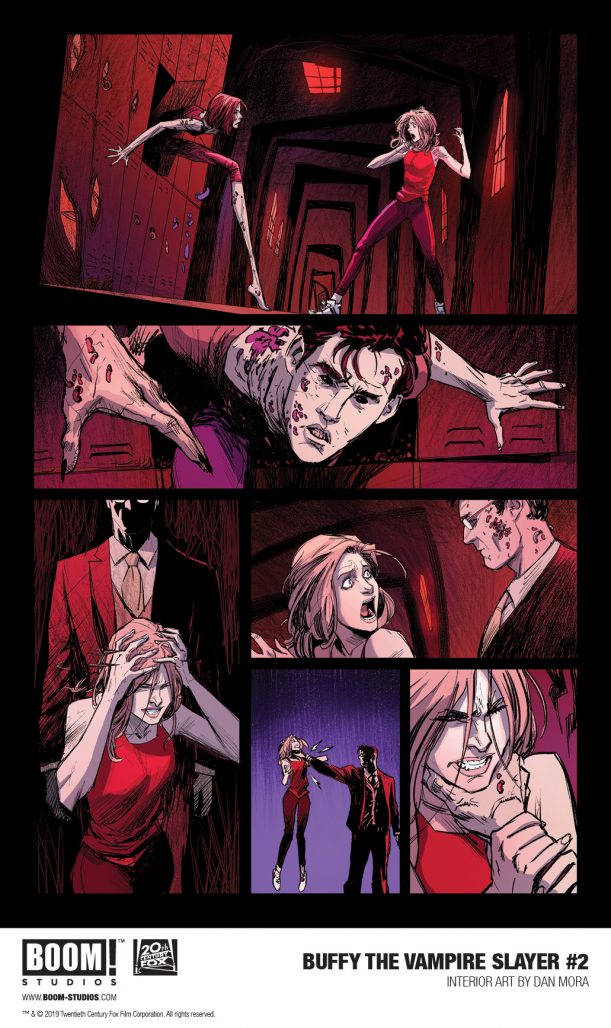
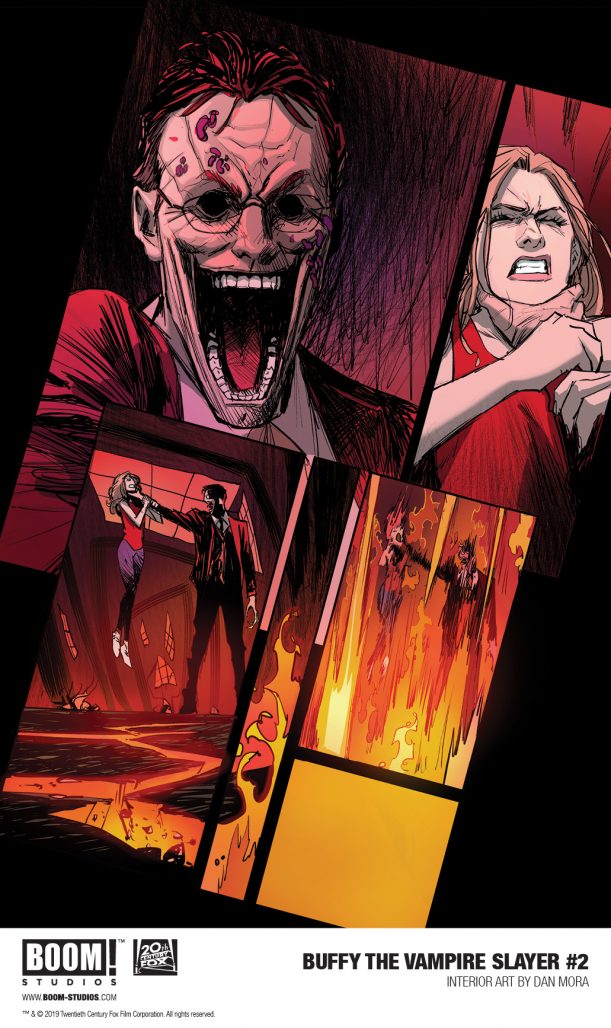
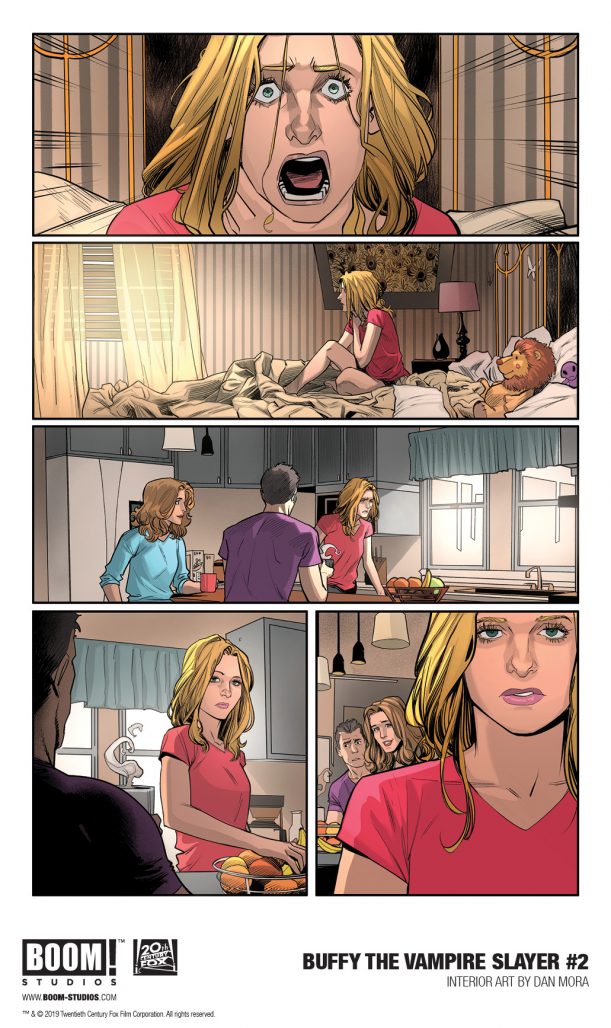
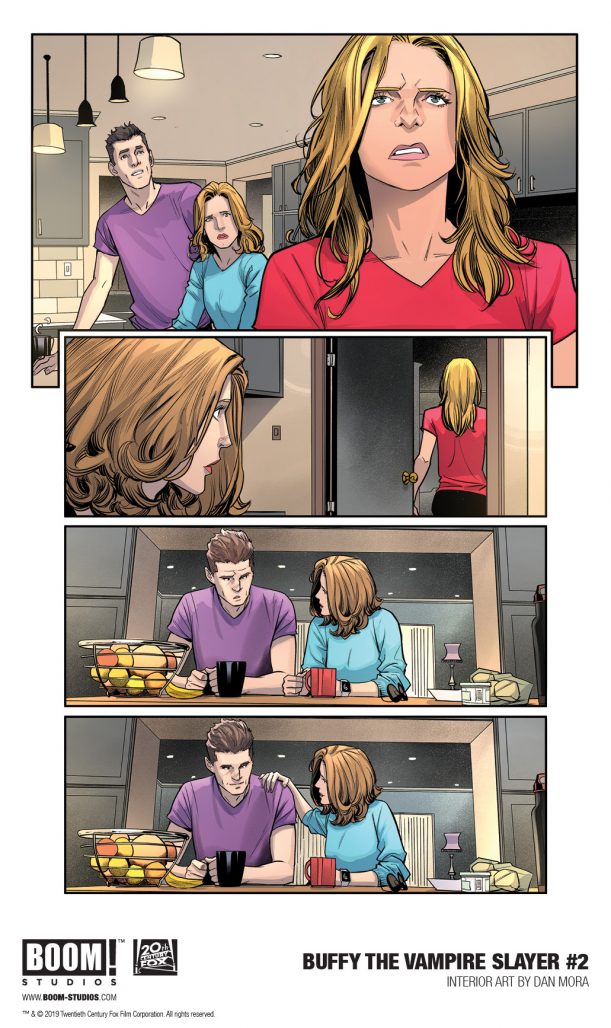


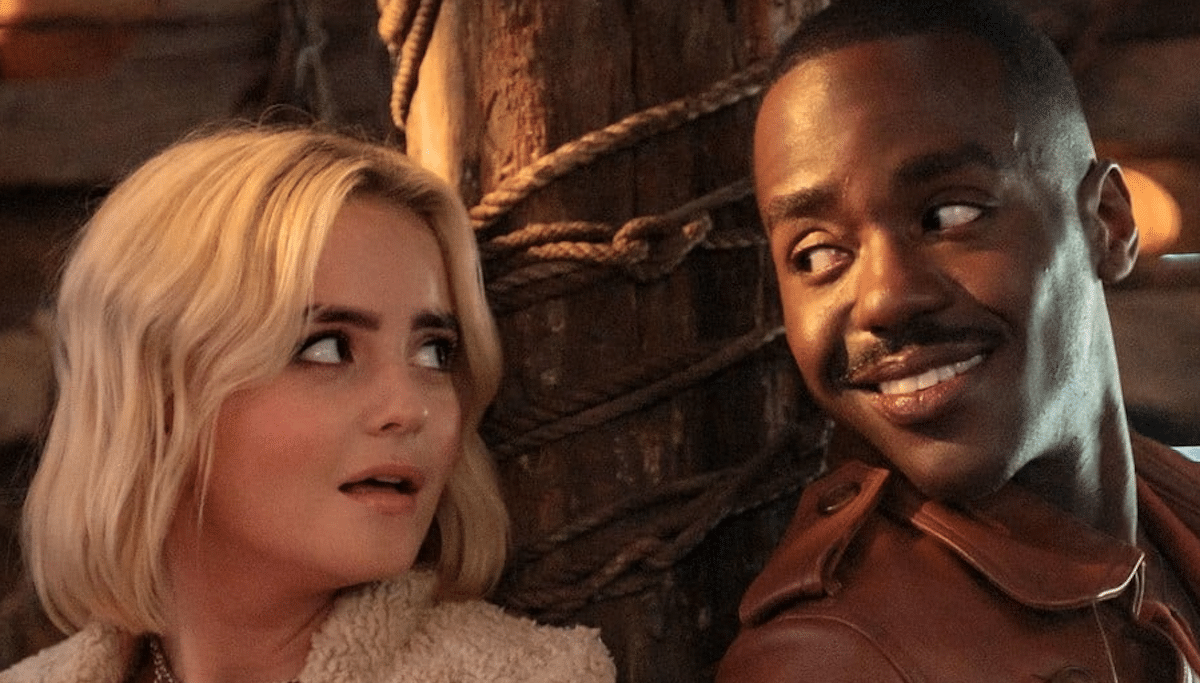



Wow! Cool visuals. Even Joyce’s posture and concern is identifiable, and therefore good. It’s hard, or different still, for me to see images of Giles, Willow and Xander, and not automatically think of their entire history with Buffy, from woe to go. Just have to get used to it at this place in the story.
Is that Buffy’s elusive and secretary-dating, not very good at keeping in contact or in interest, father?! Interesting reimagining into an unbroken home.
Whole things got my interest, based on what’s here in these visuals.
Comments are closed.